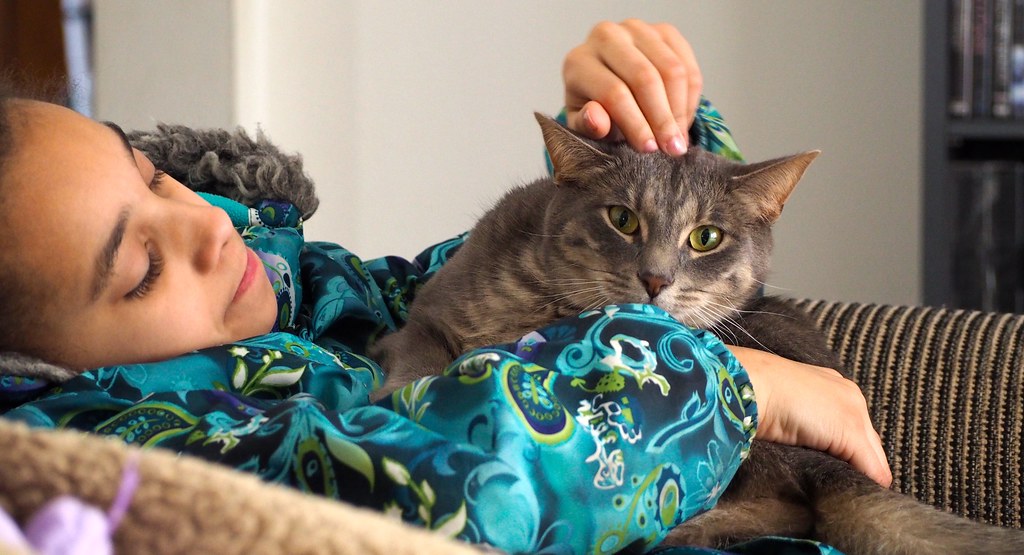PRAIRIE VIEW, Texas (March 27, 2020) – By now, it’s a word familiar to everyone: coronavirus. One of these viruses causes COVID-19 and is responsible for a global pandemic.
Prairie View A&M University researcher, Alphina Ho-Watson, DVM, offered to answer a few questions about coronaviruses. She’s a  research veterinarian in PVAMU’s College of Agriculture and Human Sciences. Ho-Watson provides care to the animals on campus and helps PVAMU researchers stay in compliance with federal state and other animal-care policies, along with assisting researchers in their projects through her association with Research & Innovation. She’s also interested in zoonotic diseases, those which can be transmitted from animals to people.
research veterinarian in PVAMU’s College of Agriculture and Human Sciences. Ho-Watson provides care to the animals on campus and helps PVAMU researchers stay in compliance with federal state and other animal-care policies, along with assisting researchers in their projects through her association with Research & Innovation. She’s also interested in zoonotic diseases, those which can be transmitted from animals to people.
“All viruses are non-living bits of nucleic acid (genetic material), trapped inside protective layers, waiting for a viable host to come along so it can commandeer its biological machinery and replicate,” she explained. “Coronaviruses are enveloped, single-stranded RNA viruses, which means they have RNA as their nucleic acid, and they’re surrounded by a ‘shell.’”
That envelope protects the virus, but Ho-Watson says they’re fragile things. “If you can disrupt the envelope, you can kill the virus.”
There are many common coronaviruses, including those responsible for the common cold. And Ho-Watson says it’s not only humans that are susceptible to them; animals are, too.
“Animals have a variety [of coronaviruses] unique to their different species, and sometimes, those can evolve and become zoonotic, [which means they’re] capable of infecting humans,” she said. “That’s what is believed to have happened with the SARS outbreak, and MERS-CoV, which caused Middle East Respiratory Syndrome and is spread by camels. Now there is SARS-CoV-2, which causes COVID-19, the current coronavirus. That being said, there is currently no evidence that SARS-CoV-2 is transmissible from domestic animals to humans.”
But, even though we’ve seen coronaviruses before, the COVID-19 outbreak deserves attention both for its widespread global transmission and the fact that it’s new.
“When it was first diagnosed, no one knew what it was or what it did,” Watson explained. “Any time there is something new and inexplicable, and it makes people sick and kills people, public health officials have to take the initiative and warn people. However, remember that even at the start of this outbreak, medical experts noticed that it wasn’t as deadly as SARS. They advised people to be aware and take precautions, but not to panic.”
Watson says that, right now, no one quite knows how COVID-19 became zoonotic.
“It is believed that the source of SARS-CoV-2, the virus that causes COVID-19, was from wild meat sold at a Wuhan, China wet market,” she said. That’s a similar trajectory to other diseases over the last half-century. “When Ebola first emerged in the 1970s, it also came from a wild animal reservoir (i.e., a host that harbors the organism in its natural environment) that infected a human in the jungle.”
One of the biggest threats with COVID-19 is its wildfire-like spread across the globe. That transmission is similar to the way the common cold is spread – close contact with those who are sick; think of how a family with a small child who’s got a cold can all come down with the ailment – only with COVID-19, the consequences are direr. Watson advises man to employ the same strategies used for avoiding a cold or flu, to stave off COVID-19.
“Be a nice human: stay home when you’re sick, or if directed, so you don’t infect others,” she said. “Also, stay current with local public health directives, since this is a quickly-evolving situation.”
###
By Holly Beretto

